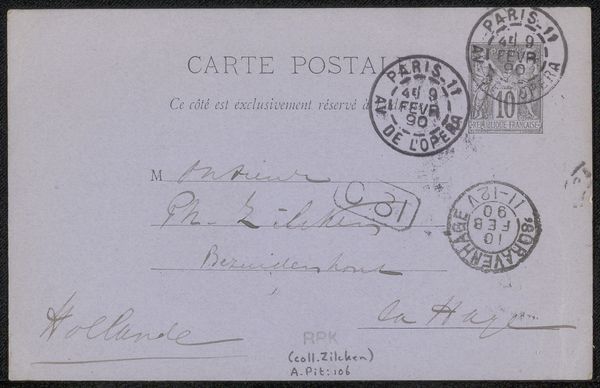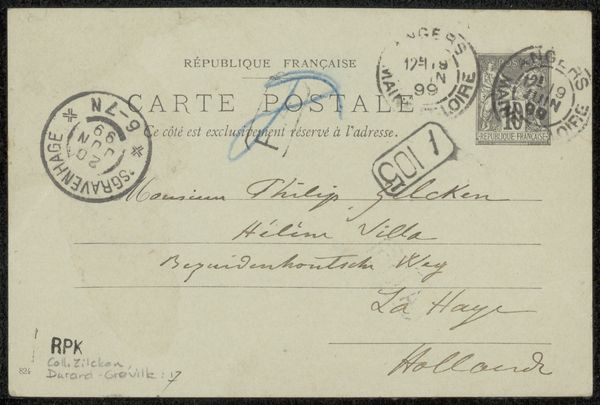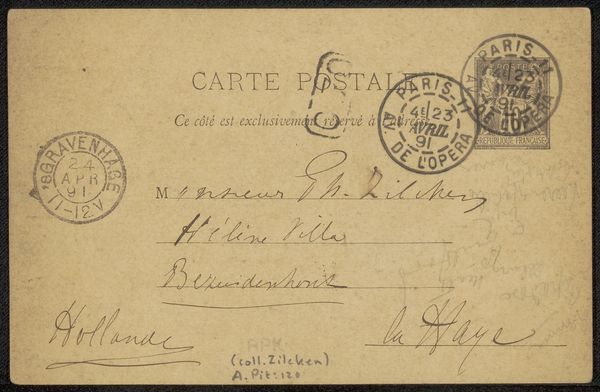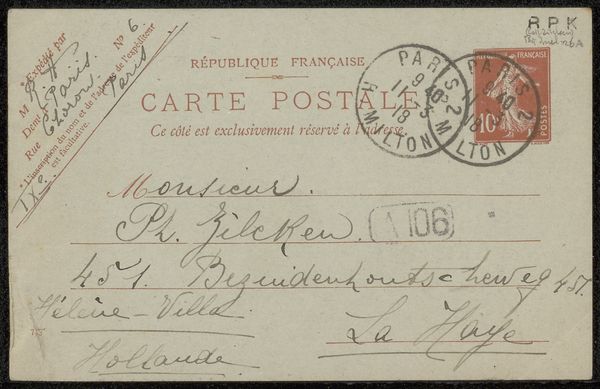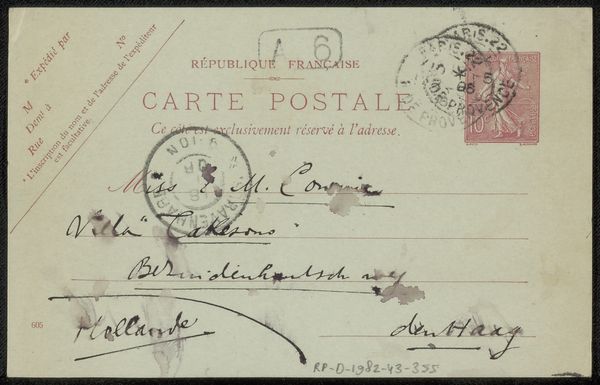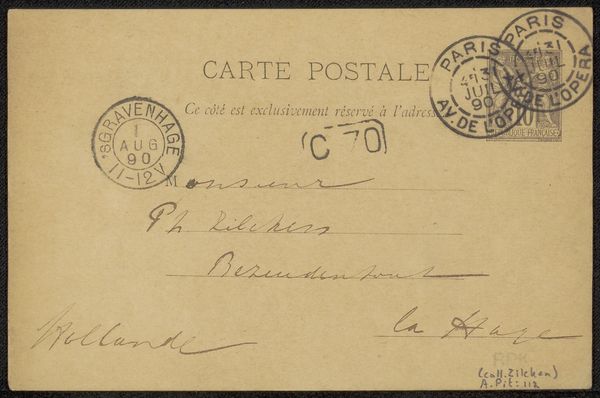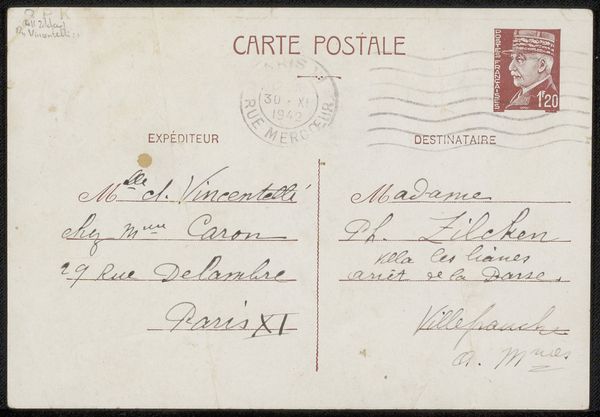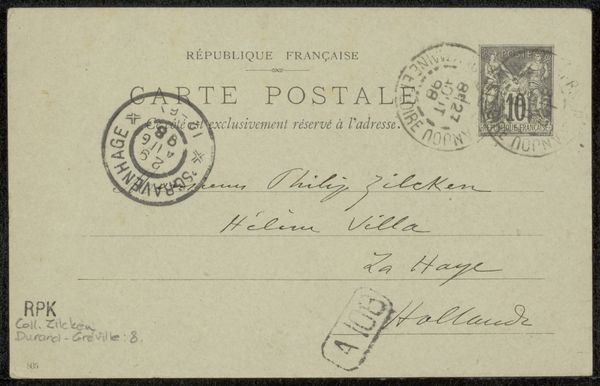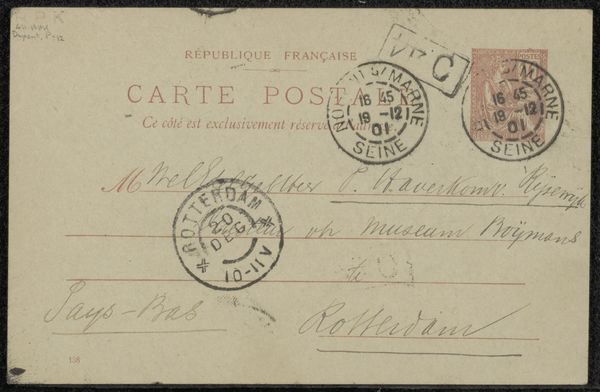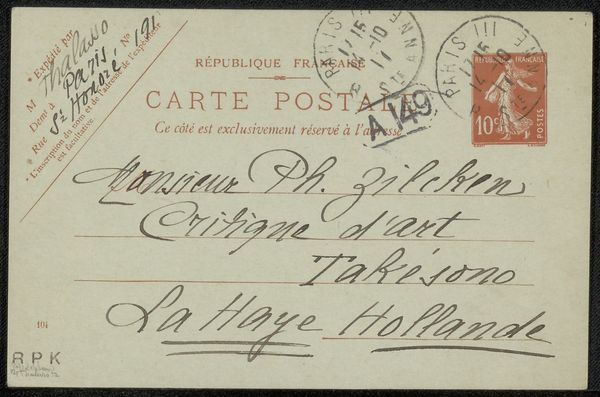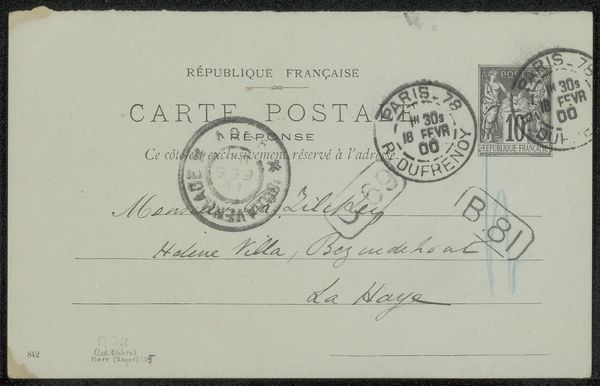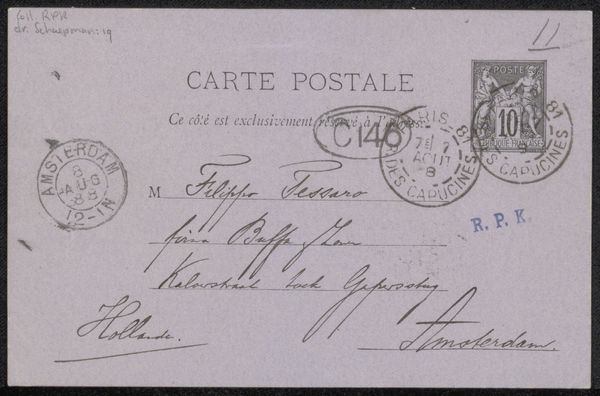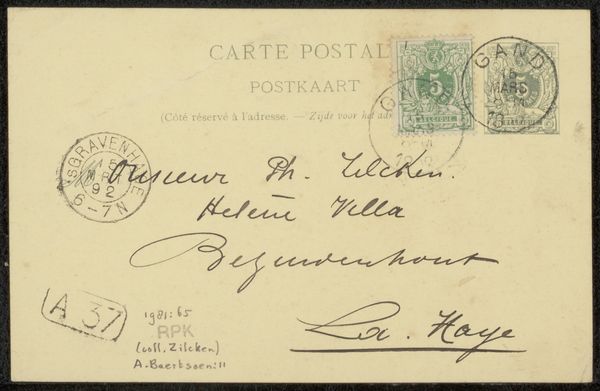
drawing, print, photography, ink, pen
#
drawing
#
hand-lettering
# print
#
old engraving style
#
hand drawn type
#
hand lettering
#
photography
#
personal sketchbook
#
ink
#
hand-drawn typeface
#
pen-ink sketch
#
pen work
#
sketchbook drawing
#
pen
#
sketchbook art
Copyright: Rijks Museum: Open Domain
Editor: Here we have "Briefkaart aan Philip Zilcken," a postcard from before 1899. It's a fascinating glimpse into the past through pen, ink, and photography. What strikes me most is how the postal markings almost become part of the art itself. How do you see this piece? Curator: This postcard is a beautiful artifact of its time. The layering of postal stamps, handwritten script, and printed text tells a complex story about communication and class structures in fin-de-siècle Europe. Postcards became a vital means of communication connecting individuals across geographical distances and socioeconomic divides, although it did disproportionally assist a select part of the population with increased social capital. It allows for new kinds of exchange to exist between elites, while reinforcing and at times even exacerbating the marginalization and disenfranchisement of specific other populations who do not possess this privilege. Editor: That’s interesting! So, even a simple postcard can highlight these complex social and historical power dynamics? Curator: Precisely. Consider the Republic logo. It represents the French nation-state but the postcard format allows individual expression within it. How might this interplay of official and personal intersect with issues of nationalism, identity, and individual agency at the time? Who was entitled to representation, who got to communicate across boundaries, and who did not? These visual components invite a broader reading of power, mobility, and social interaction. Editor: So, by looking at this seemingly simple postcard, we are really exploring who had a voice and the power to connect in that era? Curator: Absolutely. This isn’t merely a functional object; it’s a material trace of a specific cultural moment. Even the choice of handwriting over typeface brings another personal component to light. Editor: This has definitely changed how I see postcards. It's a window into societal relationships! Curator: Indeed. Everyday objects often reveal the most potent insights.
Comments
No comments
Be the first to comment and join the conversation on the ultimate creative platform.
